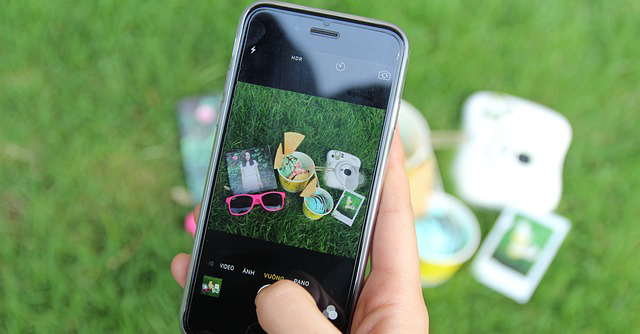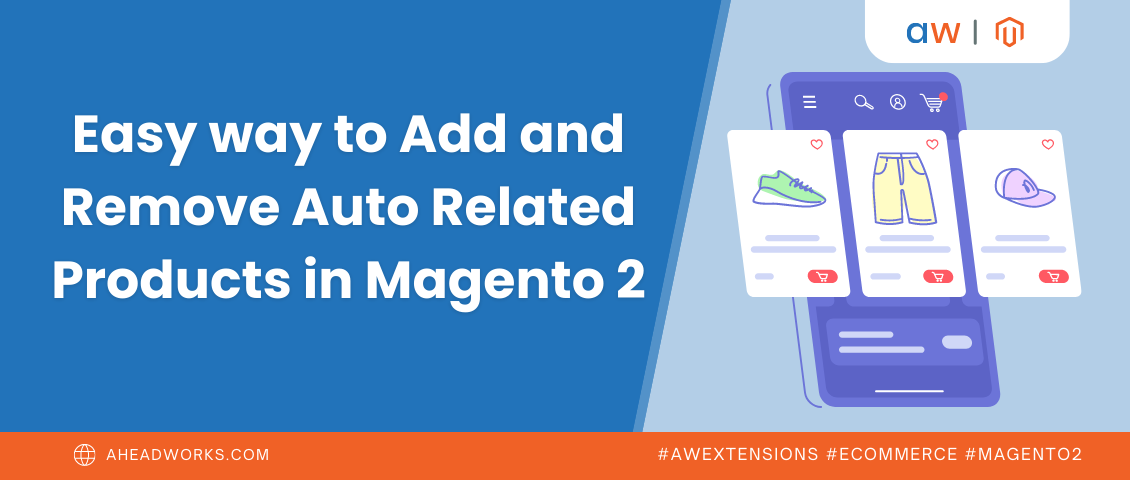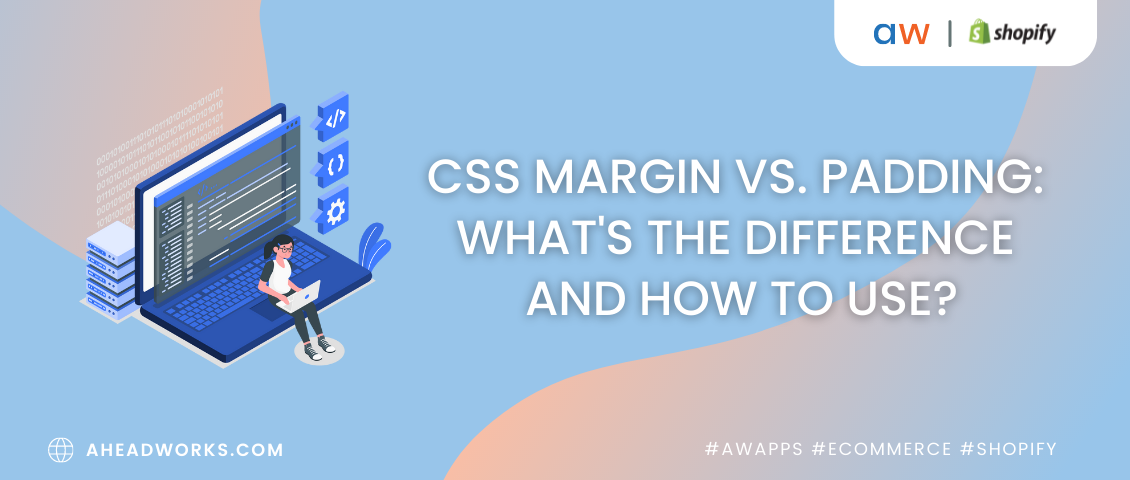
Visual Search Technologies in E-commerce: How Do They Change the Online Purchasing Experience?
Categorized as : Ecommerce
Visual search technologies help users find the required information on the internet through the input of images as search queries.

Today, these technologies become more and more widely used in the e-commerce area. In this article, we will determine the nature of visual search technologies in more detail and consider several examples of their use by online merchants.
Since the appearance of the World Wide Web, people have been interested in finding not only textual information but also visual information, like images or videos, on the internet. Users typed tags, keywords, and even short explanatory texts to describe the visual data they wanted to find. Still, such search method could not always provide accurate results.
With the advent of the content-based image retrieval functionality applied to large image databases, the visual data finding process changed significantly. Due to this technology, search engines became able to analyze the content of an image itself, not only tags or keywords associated with that image as it was before.
In other words, from that time, images were classified by colors, sizes, shapes, and other types of information that could be derived by a search engine from a particular image.
In 2010, Google made a new breakthrough in the visual recognition field by releasing Google Goggles, a visual search application that was initially designed for Android smartphones.
The application could identify visual data, such as product images, product labels, barcodes (QR codes), and the like, to provide additional info about them as well as to search for related images on the internet. Users need to only take a photo of a particular object and scan the snap with the Google Googles app.
Still, Google Goggles was not very popular among users due to a limited area of its application, and after some years, Google finally decided to shut it down.
In 2011, Google introduced the new feature for the web-based image search. From that time, users could just drag-and-drop images to the Google search bar from their system to find the related ones on the internet.
The release of the CamFind app by Image Searcher, Inc. marked the next step in the development of mobile visual search technologies. With this app, users could take a photo of any object to see the additional info about this object, including its description, availability in stores, prices comparison, etc. The features of CamFind made it possible to use this app in the e-commerce field.
The Pinterest Lens feature added by Pinterest in its visual content platform in February 2017 continued the ideas that underlain in CamFind. With this feature, users could take photos on their smartphones and view pins that looked similar to the objects in these photos.
Still, Google continues to be one of the major innovators in the visual search domain. In October 2017, the company introduced the Google Lens mobile application designed to identify objects just by pointing a device’s camera at it.
For example, by pointing the device’s camera at the Wi-Fi label with the network’s name and its password, the device will automatically connect to the corresponding network. When looking through the camera at a particular object, the app will analyze it and provide search results with the information about this object.
The introduction of this innovative app proves that today, Google tries to make the visual search technologies more “smart” preventing users from the need to take photos of objects to identify them.
One should note that the above-described technologies were not initially designed to serve the needs of the e-commerce industry, but rather for ordinary use. However, when such companies as Slyce, Snap Tech, ViSenze, and the like came into play, the visual search experience in the e-commerce domain, including the image, video, and 3D search technologies, radically changed.
Slyce Inc. is an American company that creates custom web and mobile projects based on the visual search and recognition technologies. Among the Slyce’s clients are the top online retailing brands from Europe and USA, including Best Buy, Neiman Marcus, Tommy Hilfiger, etc.
Slyce is well-known for the creation of Slyce Visual Search SDK, the mobile application that scans visual data, including product images, barcodes, QR codes, through the camera of a mobile device. Let’s consider several examples of the Slyce’s projects.
Neiman Marcus, the famous American clothing brand, contacted the Slyce company for help in increasing the conversion rates of the mobile version of its site. The Slyce team solved this task by creating the Snap. Find. Shop mobile app based on the Slyce’s 3D visual search technology.
The solution offered by Slyce significantly facilitated the product search process for the Neiman Marcus customers and increased mobile transactions made in the store. By taking pictures of various product items, customers could find similar or related products in the store’s catalog and buy them with a single tap.
Due to the Slyce’s innovative technology, Norman Marcus won the Luxury Retailer of the Year award in 2015.
Another outstanding example of the Slyce’s effective visual search solutions is the Tommyland mobile app created especially for the fashion show of Tommy Hilfiger, the American fashion designer, to increase customer engagement with the brand and its products.
Working in a close cooperation with the Tommy Hilfiger’s marketing team, Slyce managed to create the first app based on the runway recognition technology. Using cameras of their devices, customers could take photos of objects, such as clothes on the fashion models who participated in the show, images on billboards, pop-ups, and the like, literally “on the go”. Then, they could find items similar to those on the snaps in the Tommy Hilfiger’s web store catalog.
The functionality implemented by Slyce in the app worked on the base of both the 2D (for still images) and 3D (for moving images and objects) visual recognition technologies. Also, users could save the snaps they liked thanks to the List Building feature of the app.
However, fashion and clothing is not the only area in which the Slyce’s solutions were implemented. Let’s take the Shoppers app, for example, through which users could snap photos or grocery products in their refrigerators to further check their availability in stores, compare different offers as well as to get some recipes.
The Shoppers app radically changed the buying experience in the grocery industry. Currently, more than 2 million shoppers use this app in their everyday life.
Snap Tech is a London based company that provides top-notch visual search solutions mainly for fashion retailers. The company became well-known due to its Snap Fashion mobile visual recognition technology.
Thanks to this technology, users could take photos of clothing items to view product recommendations from more than 250 top fashion retailers (mainly from Britain), including Oasis, Look, InStyle, and others, which Snap Tech partnered with. This solution notably changed the purchasing experience for the UK shoppers.
In addition to its own product, the Snap Tech team develops custom solutions for its clients. One of such clients was the Oasis chain of retail woman clothing stores that contacted Snap Tech for help in increasing sales on its site.
For this project, the Snap Tech developers decided to enhance the functionality of the Oasis site by adding the Snap for Similar button. By clicking on the button, customers could find the item visually similar to the one they viewed in the store catalog.
The implementation of this solution by Snap Tech helped Oasis notably increase the conversion rates and customer engagement on their web store.
Time Inc., the American branded media company that publishes fashion magazines, contacted Snap Tech for help in adding visual search functionality to the sites of the Time’s fashion retail partners, including Marie Claire UK, InStyle, Look, and the like.
With the Snap Similar feature added by the Snap Tech team, readers could find the products similar or related to those described by Time in the articles on the above-mentioned sites. One should note that in 2016, the Marie Claire UK store owners used the Snap Tech’s visual search tools to create shoppable galleries of its products for the fashion week in London.
ViSenze is a software company that creates visual commerce solutions for retailers and publishers from all over the world. Using its own image recognition technologies, ViSenze provides new search opportunities for e-commerce businesses and their customers.
Currently, the company has offices in India, UK, US, China, and Singapore. ViSenze originally started as a part of NExT, a leading research center jointly established by the Singapore National University and the Tsinghua University of China.
One of the most outstanding inventions of ViSenze is the image and video recognition technology which is able to understand the context not only of images but also videos to further display the relevant information for users.
Among the other ViSenze’s innovations is the Automatic Object Recognition technology. It works in the following way: when a user points the camera of a device on particular clothing items, the technology automatically detects what object to focus on before searching for visually similar items. Thus, users don’t have to manually set up their camera perspectives.
Below are the examples of its several custom projects.
BlueStone, the Indian jewelry and accessories web store, strove to provide a better product catalog navigation experience for its shoppers and partnered with ViSenze for that purpose.
The ViSenze team solved this task by implementing the Find Similar feature for the BlueStone site that displayed visually similar items on its relevant product pages. As a result, the look of the site became more attractive for customers, and its conversion rates notably grew.
The ASOS world-famous fashion brand contacted ViSenze for help in decreasing the cart rejection rates of its site due to the stock unavailability of particular product items.
The ViSenze team added the Out of Stock Alternatives feature to the ASOS site that displayed its customers visually similar, in terms of color, style, shape, and other characteristics, items for the out-of-stock products on the site. The implementation of this solution helped the merchants to reduce the number of lost sales, which, in turn, increased the conversion rates of the ASOS web store.
Myntra, the Indian fashion brand, asked the ViSenze team for help in improving the search experience on its site for mobile users who constituted a significant part of its customer base.
By implementing its image search technology, the ViSenze developers managed to improve the SEO indicators on the Myntra site. From that time, customers did not have to input certain keywords in order to find the required items in the Myntra’s product catalog. Instead, they could upload images to the site’s server from their smartphones to find the visually similar products in the catalog.
Lastly, let’s take the example of the project made by ViSenze for Xerve, the first Indian online info-hub and retail store. Competing with such large retailing brands as Snapdeal, Flipkart, Amazon, and the like, Xerve wanted to improve the user search, navigation, and price comparison experience on its site.
For this project, the ViSenze team decided to implement the Price Comparison feature based on its visual search technology. With the help of this feature, customers could view and compare prices of visually similar product items in the store’s catalog to find the best deal available.
Visual search technologies became the new era in the development of the e-commerce industry providing online buyers and merchants with an absolutely new shopping experience. As we can see, the scope of these technologies is large, and this domain is expected to further evolve in the future.

Today, these technologies become more and more widely used in the e-commerce area. In this article, we will determine the nature of visual search technologies in more detail and consider several examples of their use by online merchants.
The Past and the Present of Visual Search Technologies
Since the appearance of the World Wide Web, people have been interested in finding not only textual information but also visual information, like images or videos, on the internet. Users typed tags, keywords, and even short explanatory texts to describe the visual data they wanted to find. Still, such search method could not always provide accurate results.
With the advent of the content-based image retrieval functionality applied to large image databases, the visual data finding process changed significantly. Due to this technology, search engines became able to analyze the content of an image itself, not only tags or keywords associated with that image as it was before.
In other words, from that time, images were classified by colors, sizes, shapes, and other types of information that could be derived by a search engine from a particular image.
In 2010, Google made a new breakthrough in the visual recognition field by releasing Google Goggles, a visual search application that was initially designed for Android smartphones.
The application could identify visual data, such as product images, product labels, barcodes (QR codes), and the like, to provide additional info about them as well as to search for related images on the internet. Users need to only take a photo of a particular object and scan the snap with the Google Googles app.
Still, Google Goggles was not very popular among users due to a limited area of its application, and after some years, Google finally decided to shut it down.
In 2011, Google introduced the new feature for the web-based image search. From that time, users could just drag-and-drop images to the Google search bar from their system to find the related ones on the internet.
The release of the CamFind app by Image Searcher, Inc. marked the next step in the development of mobile visual search technologies. With this app, users could take a photo of any object to see the additional info about this object, including its description, availability in stores, prices comparison, etc. The features of CamFind made it possible to use this app in the e-commerce field.
The Pinterest Lens feature added by Pinterest in its visual content platform in February 2017 continued the ideas that underlain in CamFind. With this feature, users could take photos on their smartphones and view pins that looked similar to the objects in these photos.
Still, Google continues to be one of the major innovators in the visual search domain. In October 2017, the company introduced the Google Lens mobile application designed to identify objects just by pointing a device’s camera at it.
For example, by pointing the device’s camera at the Wi-Fi label with the network’s name and its password, the device will automatically connect to the corresponding network. When looking through the camera at a particular object, the app will analyze it and provide search results with the information about this object.
The introduction of this innovative app proves that today, Google tries to make the visual search technologies more “smart” preventing users from the need to take photos of objects to identify them.
One should note that the above-described technologies were not initially designed to serve the needs of the e-commerce industry, but rather for ordinary use. However, when such companies as Slyce, Snap Tech, ViSenze, and the like came into play, the visual search experience in the e-commerce domain, including the image, video, and 3D search technologies, radically changed.
Visual Search in E-commerce: Case Studies
Slyce
Slyce Inc. is an American company that creates custom web and mobile projects based on the visual search and recognition technologies. Among the Slyce’s clients are the top online retailing brands from Europe and USA, including Best Buy, Neiman Marcus, Tommy Hilfiger, etc.
Slyce is well-known for the creation of Slyce Visual Search SDK, the mobile application that scans visual data, including product images, barcodes, QR codes, through the camera of a mobile device. Let’s consider several examples of the Slyce’s projects.
Neiman Marcus, the famous American clothing brand, contacted the Slyce company for help in increasing the conversion rates of the mobile version of its site. The Slyce team solved this task by creating the Snap. Find. Shop mobile app based on the Slyce’s 3D visual search technology.
The solution offered by Slyce significantly facilitated the product search process for the Neiman Marcus customers and increased mobile transactions made in the store. By taking pictures of various product items, customers could find similar or related products in the store’s catalog and buy them with a single tap.
Due to the Slyce’s innovative technology, Norman Marcus won the Luxury Retailer of the Year award in 2015.
Another outstanding example of the Slyce’s effective visual search solutions is the Tommyland mobile app created especially for the fashion show of Tommy Hilfiger, the American fashion designer, to increase customer engagement with the brand and its products.
Working in a close cooperation with the Tommy Hilfiger’s marketing team, Slyce managed to create the first app based on the runway recognition technology. Using cameras of their devices, customers could take photos of objects, such as clothes on the fashion models who participated in the show, images on billboards, pop-ups, and the like, literally “on the go”. Then, they could find items similar to those on the snaps in the Tommy Hilfiger’s web store catalog.
The functionality implemented by Slyce in the app worked on the base of both the 2D (for still images) and 3D (for moving images and objects) visual recognition technologies. Also, users could save the snaps they liked thanks to the List Building feature of the app.
However, fashion and clothing is not the only area in which the Slyce’s solutions were implemented. Let’s take the Shoppers app, for example, through which users could snap photos or grocery products in their refrigerators to further check their availability in stores, compare different offers as well as to get some recipes.
The Shoppers app radically changed the buying experience in the grocery industry. Currently, more than 2 million shoppers use this app in their everyday life.
Snap Tech
Snap Tech is a London based company that provides top-notch visual search solutions mainly for fashion retailers. The company became well-known due to its Snap Fashion mobile visual recognition technology.
Thanks to this technology, users could take photos of clothing items to view product recommendations from more than 250 top fashion retailers (mainly from Britain), including Oasis, Look, InStyle, and others, which Snap Tech partnered with. This solution notably changed the purchasing experience for the UK shoppers.
In addition to its own product, the Snap Tech team develops custom solutions for its clients. One of such clients was the Oasis chain of retail woman clothing stores that contacted Snap Tech for help in increasing sales on its site.
For this project, the Snap Tech developers decided to enhance the functionality of the Oasis site by adding the Snap for Similar button. By clicking on the button, customers could find the item visually similar to the one they viewed in the store catalog.
The implementation of this solution by Snap Tech helped Oasis notably increase the conversion rates and customer engagement on their web store.
Time Inc., the American branded media company that publishes fashion magazines, contacted Snap Tech for help in adding visual search functionality to the sites of the Time’s fashion retail partners, including Marie Claire UK, InStyle, Look, and the like.
With the Snap Similar feature added by the Snap Tech team, readers could find the products similar or related to those described by Time in the articles on the above-mentioned sites. One should note that in 2016, the Marie Claire UK store owners used the Snap Tech’s visual search tools to create shoppable galleries of its products for the fashion week in London.
ViSenze
ViSenze is a software company that creates visual commerce solutions for retailers and publishers from all over the world. Using its own image recognition technologies, ViSenze provides new search opportunities for e-commerce businesses and their customers.
Currently, the company has offices in India, UK, US, China, and Singapore. ViSenze originally started as a part of NExT, a leading research center jointly established by the Singapore National University and the Tsinghua University of China.
One of the most outstanding inventions of ViSenze is the image and video recognition technology which is able to understand the context not only of images but also videos to further display the relevant information for users.
Among the other ViSenze’s innovations is the Automatic Object Recognition technology. It works in the following way: when a user points the camera of a device on particular clothing items, the technology automatically detects what object to focus on before searching for visually similar items. Thus, users don’t have to manually set up their camera perspectives.
Below are the examples of its several custom projects.
BlueStone, the Indian jewelry and accessories web store, strove to provide a better product catalog navigation experience for its shoppers and partnered with ViSenze for that purpose.
The ViSenze team solved this task by implementing the Find Similar feature for the BlueStone site that displayed visually similar items on its relevant product pages. As a result, the look of the site became more attractive for customers, and its conversion rates notably grew.
The ASOS world-famous fashion brand contacted ViSenze for help in decreasing the cart rejection rates of its site due to the stock unavailability of particular product items.
The ViSenze team added the Out of Stock Alternatives feature to the ASOS site that displayed its customers visually similar, in terms of color, style, shape, and other characteristics, items for the out-of-stock products on the site. The implementation of this solution helped the merchants to reduce the number of lost sales, which, in turn, increased the conversion rates of the ASOS web store.
Myntra, the Indian fashion brand, asked the ViSenze team for help in improving the search experience on its site for mobile users who constituted a significant part of its customer base.
By implementing its image search technology, the ViSenze developers managed to improve the SEO indicators on the Myntra site. From that time, customers did not have to input certain keywords in order to find the required items in the Myntra’s product catalog. Instead, they could upload images to the site’s server from their smartphones to find the visually similar products in the catalog.
Lastly, let’s take the example of the project made by ViSenze for Xerve, the first Indian online info-hub and retail store. Competing with such large retailing brands as Snapdeal, Flipkart, Amazon, and the like, Xerve wanted to improve the user search, navigation, and price comparison experience on its site.
For this project, the ViSenze team decided to implement the Price Comparison feature based on its visual search technology. With the help of this feature, customers could view and compare prices of visually similar product items in the store’s catalog to find the best deal available.
Conclusion
Visual search technologies became the new era in the development of the e-commerce industry providing online buyers and merchants with an absolutely new shopping experience. As we can see, the scope of these technologies is large, and this domain is expected to further evolve in the future.











